What Is an Obelisk? – Unravel the Mystery of the Obelisk
What is an obelisk? That is a good question with regard to obelisks. What does an obelisk represent, why are obelisks everywhere, and what is the history of the obelisk? These are some of the questions that will be answered in this article below. We will also examine some of the most famous obelisks in the world, so keep reading to learn more about obelisks around the world!
What Is an Obelisk?
Obelisks are some of the oldest human structures that have ever been created, and many of them are thousands of years old at this point. So, what is an obelisk then? An obelisk is typically defined as a tall and tapering stone structure that has four sides and is often made of a single stone that has been carved into a specific shape. Essentially, they are like megaliths but contain far more comprehensive craftsmanship.
There are many different types of obelisks that have been found throughout the world, and the general obelisk shape is still used to this day in the construction of some structures.
The oldest known obelisks are, however, Egyptian obelisks, and they were called tekhenu. The word we use today is instead from Herodotus, the “Father of History”, who used the term obeliskos. The English term is descended directly from this Ancient Greek word that meant “pointed pillar” or “nail”. There are now obelisks found throughout the world, although some of the most famous obelisks are still, generally, those that are Egyptian in origin. Many of them have been removed from their original locations and can now be found elsewhere around the world, such as in museums or in special locations where they have been used in a commemorative sense.

Obelisks have withstood the test of time to become some of the most prominent pieces of early architecture and a stunning example of ancient human ingenuity. Furthermore, many obelisks were used for propaganda purposes, and as such, they can often tell us a lot about the cultures that designed them in the first place. This is not always the case, but as obelisks were often adorned with carvings that depicted historical events, they have been integral to our understanding of the ancient world.
So, let us have a look at the history of the obelisk in different regions.
The History of the Obelisk Around the World
Let us have a look at obelisks from around the world. Different cultures used them for different reasons, and while Egyptian obelisks may have been the first, they were quickly imitated elsewhere. There are also instances of this form of architecture that are unrelated to Egyptian obelisks. Let’s examine the different types.
Ancient Egyptian Obelisks
Egyptian obelisks were the earliest form of obelisk design, and they were of integral importance to the Ancient Egyptian culture as a whole. Obelisks were typically placed in front of temples, and they often flanked the entryways. These obelisks were said to be symbolic of Ra, the sun god.
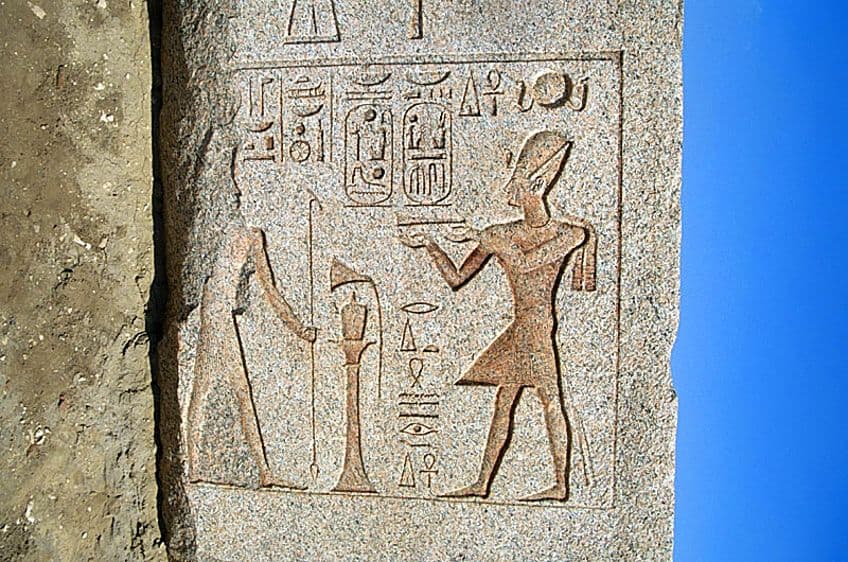
The earliest of these obelisks that we have found is located in the modern-day Heliopolis, and it is known as the Obelisk of Senusret I. This particular obelisk was constructed during the Twelfth Dynasty, and it stands at a height of 20.7 m (or 68 ft). This means that it was built between 1971 and 1926 BCE.
Assyrian Obelisks
The Assyrian civilization imitated the obelisk shape from Egypt to create their own form of this architectural structure. These did not have the same religious significance as those in Egyptian mythology and were instead used as propaganda-oriented monuments that were used as commemorations of the military victories of the Assyrian kings. These Assyrian obelisks contained inscriptions and reliefs on every side of the structure, and this allowed them to serve as public monuments that could extoll the virtues of the kings.
However, only three of these obelisks have survived to this day, and all three of them are in the possession of the British Museum.
Axumite Obelisks
The Kingdom of Axum was a powerful and ancient kingdom located in modern-day Ethiopia, and they were used for funerary purposes. The largest of all the Axumite obelisks were used for royalty and aristocracy, and they were decorated with various images. For instance, the obelisks used by royalty included carvings of false windows and doors. The lower the rank of the deceased person, the less intricate the carvings.
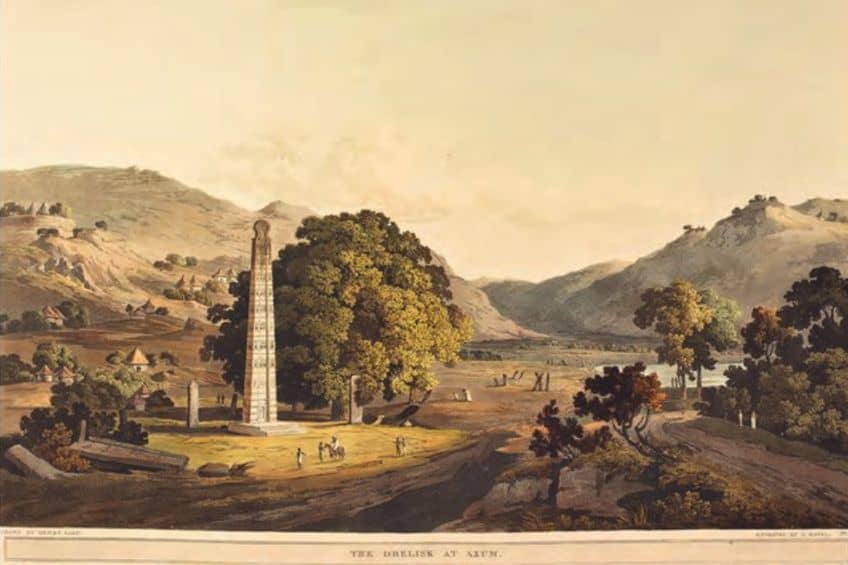
The largest of these obelisks is the Great Stele of Axum, which stood at 33 m (or 108 ft), but it has since collapsed. When this obelisk was still standing, it would have been one of the largest in the world. Furthermore, while there are relatively few of the largest obelisks still standing, there are large fields full of smaller ones that mark the graves of lesser-known people.
Ancient Roman Obelisks
The Romans were a little different with regard to how they made use of obelisks. Many of the obelisks that are now located in regions that were once controlled by the Romans actually contained Egyptian obelisks that were taken and moved by the Romans. However, there were also Roman obelisks that were effectively imitations of the more famous Egyptian variety. Obelisks were used as trophies when they were taken, but they could also serve as commemorative monuments.
Additionally, the Romans used them for more functional means, such as serving as landmarks or sundials.
Byzantine Obelisks
The Byzantine Empire was the continuation of the Roman Empire in the east, and it maintained its capital in Constantinople. This means that, in many ways, they were reminiscent of Roman obelisks in general. Many Byzantine obelisks were restorations of previous obelisks, such as those that had been brought from Egypt.
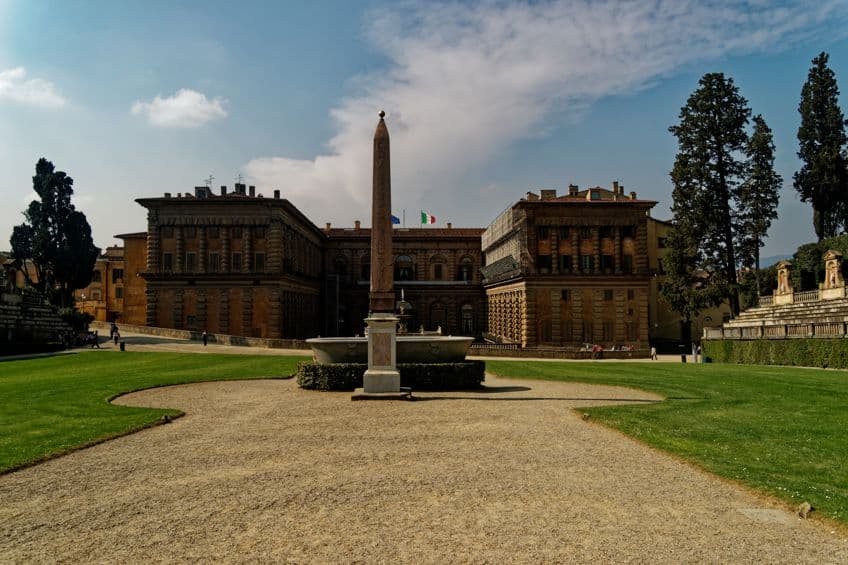
However, there were also Byzantine obelisks that were used as landmarks or commemorative structures. One of the interesting differences is that some of the Byzantine obelisks did not follow tradition and were instead comprised of a variety of rocks and bricks in an obelisk shape rather than being hewn from a single piece of large stone.
Peruvian Obelisks
Not all obelisks were necessarily influenced by the Egyptians, like those in Peru. These Peruvian obelisks were instead inspired by some of the monumental pieces of architecture that could be found in civilizations, such as the Inca. These obelisks were still relatively similar to those that are found in the Middle East and Europe. Peruvian obelisks were used for some similar purposes, such as religious and commemorative reasons. They were also intricately carved to show the abilities of those who had carved them in the first place.
This meant that they were appreciated for more than their function, but also for their artistic value.
Modern Obelisks
Modern obelisks are not quite as they were in ancient times. These structures are no longer needed for typical religious or astronomical purposes, and they are instead generally used as commemorative or functional objects, such as by serving as monuments, landmarks, sundials, or to hide something like an antenna.

Perhaps the most famous modern obelisk is the Washington Monument. This massive obelisk was completed in 1884 and still stands as the world’s tallest such structure at 169.04 m (or 554.7 ft). It emulates Egyptian obelisks and is used as a commemorative monument to celebrate George Washington, the First President of the United States and one of the Founding Fathers.
Some of the Most Famous Obelisks
Obelisks are found all over the world, but many of the most famous of them are the Egyptian obelisks and those that were immediately inspired by them. We will examine five of the most famous obelisks in the world in this next section. Keep reading to learn a lot more about some of the most famous obelisks around the globe.
Obelisk of Theodosius (1479 – 1425 BCE) from the Hippodrome
| Date | 1479 – 1425 BCE |
| Materials Used | Red granite |
| Height | 18.54 meters (or 60.8 ft) |
| Discovery Location | Hippodrome, Constantinople, Turkey |

The Obelisk of Theodosius is another of the Ancient Egyptian obelisks that were later moved elsewhere. In this case, this ancient obelisk was taken by the Roman Emperor Theodosius I, hence the name of this famous obelisk, but it was originally located in the Temple of Karnak. It was moved at the behest of the Roman emperor to Turkey. The transport process may not have been particularly successful though as part of the obelisk is now actually missing but we do not know for certain what happened to it.
The obelisk was originally at a height of 30 m, but it has since been reduced to 18.54 m. The new location in which it was set was the Hippodrome in Constantinople (or modern-day Istanbul), and it is still located in this historic city to this day.
However, the original purpose of this famous obelisk was to serve as a commemorative monument to the might of Pharaoh Thutmose III after he managed to defeat the Mitanni. The obelisk is today located in Istanbul and has remained there for hundreds of years. It is one of the oldest monuments in the city, and the story of its transport is one that is still told as it required numerous engineers and workers operating alongside machines to move it, transport it, and re-erect it.
Luxor Obelisks (1250 BCE) from the Luxor Temple
| Date | 1250 BCE |
| Materials Used | Red granite |
| Height | 23 meters (75 ft) |
| Discovery Location | Luxor Temple, Egypt |
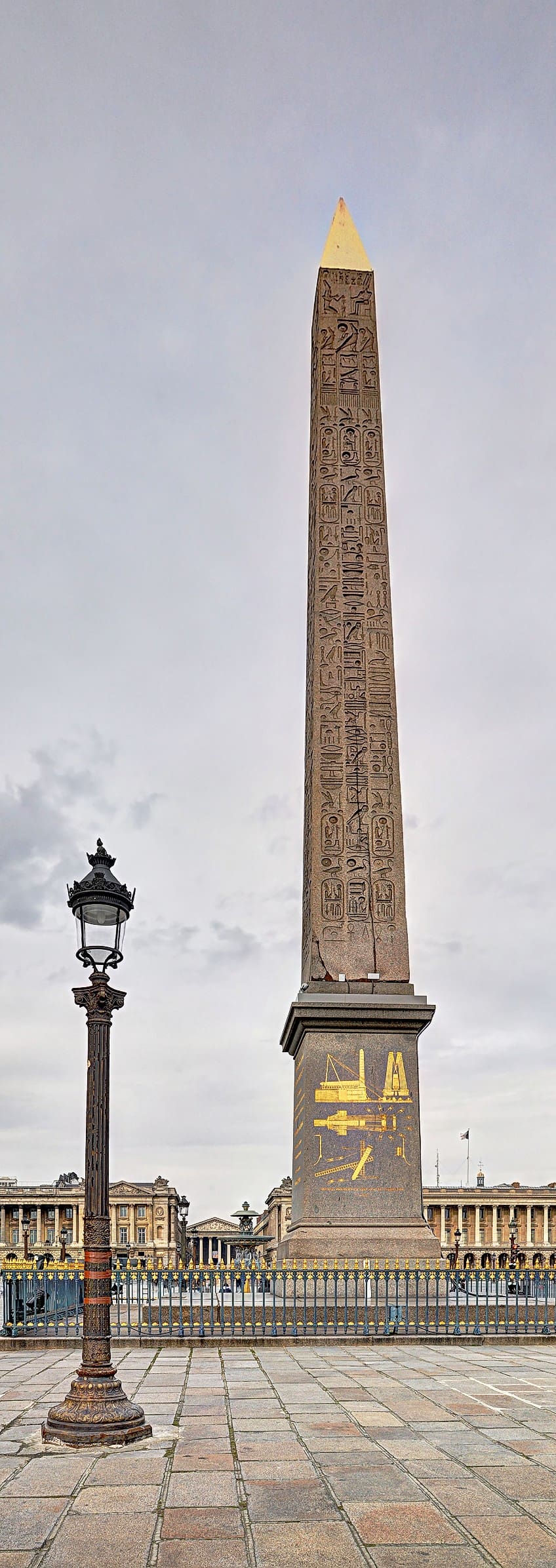
The Luxor Obelisks are actually a pair of obelisks, but they are among the most famous to have ever been created. These two obelisks were originally made and erected beside the Luxor Temple. This is an ancient temple in Egypt, and these particular obelisks were erected during the reign of Ramesses II. This particular figure should be well-known to many as he is also known as Ozymandias and so the poem that shares that name is about him. Additionally, he is often considered to be one of the prime candidates for the pharaoh from Exodus, the second chapter of the Christian and Jewish holy books.
The reason the figure of Ramesses II, or Ramesses the Great, is so important with regard to these obelisks is that he is the figure discussed in the inscriptions around the obelisk.
His achievements, as well as the achievements of Nefertari, his wife, are written in hieroglyphs on all four sides of the obelisk’s shape. This indicates the important commemorative value that these two obelisks possessed for this ancient and widely known Ancient Egyptian ruler. As for the status of these two famous obelisks now, only one of them is still situated at its original destination. It still remains in a protected location in Luxor, but it is slowly leaning to one side. It is absolutely ancient though, so that may be expected of something so heavy and old. The other obelisk was instead moved to Paris. It was given to France by the Egyptian ruler at the time as thanks for the French scholar who deciphered the hieroglyphs in the first place.
Black Obelisk of Shalmaneser III (827 – 824 BCE) from Nimrud
| Date | 827 – 824 BCE |
| Materials Used | Limestone |
| Height | 1.98 meters (6.5 ft) |
| Discovery Location | Nimrud, Iraq |
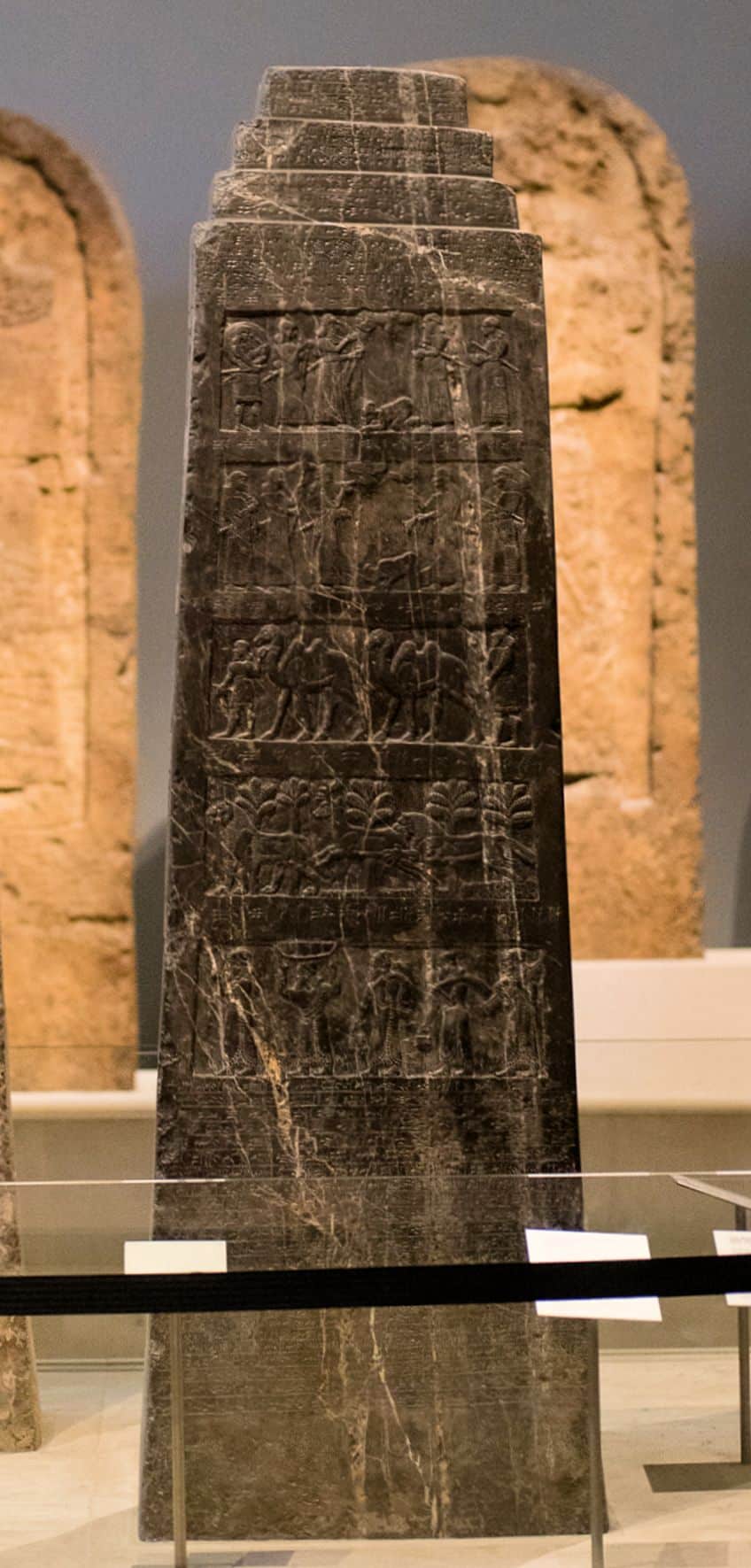
The Black Obelisk of Shalmaneser III is not quite as tall as some of the other famous obelisks on this list, but in the history of the obelisk, this one stands out. This obelisk is a stunning example of Assyrian artistry, and it depicts twenty separate scenes in relief, and each of those depicts a different king from a different region that had come to bow down to Shalmaneser III as the most powerful of them all.
One of the reasons for the immense historical significance of this particular obelisk, when there are so many other obelisks around the world, is because of someone who is depicted in one of those reliefs.
There is a figure known as Jehu. This figure has been identified as an ancient Hebrew king and a character from the Bible. The reason this is particularly significant is because this is also the earliest known depiction of a figure from the Bible. This black limestone obelisk is also simply striking in its general presentation as most obelisks are not black in color, and its historical significance has led to various replicas of it around the world. It has been studied in incredible depth and when it was discovered by a British archaeologist, it was taken back to England. The original can still be found in the British Museum and is one of the most famous obelisks in the world.
King Ezana’s Stele (4th Century CE) from Axum
| Date | 4th century CE |
| Materials Used | Granite |
| Height | 21 meters (69 ft) |
| Discovery Location | Axum, Ethiopia |

King Ezana’s Stele is another of the most famous obelisks in the world, but this particular obelisk is probably one of the most famous African obelisks. This particular obelisk was found in Axum, an ancient city in modern-day Ethiopia. This particular obelisk is also a commemorative monument that is specifically directed toward King Ezana, a figure who converted to Christianity. This obelisk was in commemoration of that act, and because of this, it is an important piece of Christian history as well as the history of obelisks in general.
This obelisk is one of the last remaining remnants of the ancient Axumite civilization and an early indicator of Christianity’s arrival in Africa.
It is also mostly intact and so it has been extensively studied over the years. The site at which it is erected is also surrounded by various other obelisks, but they are all far smaller and often do not contain the kind of inscriptions located on King Ezana’s Stele. One of the interesting aspects about this particular obelisk is also the way in which various languages are recorded on it. There are inscriptions in Ge’ez (Ancient Ethiopian), Sabaean (Ancient Yemeni), and Ancient Greek, which were considered to be the international language at the time. This indicates that not only was this meant for fellow Axumite people, but also for foreigners who may have visited the region.
Walled Obelisk (Late Antiquity) from the Hippodrome
| Date | Late Antiquity (Exact date unknown) |
| Materials Used | Limestone and plaster |
| Height | 32 meters (105 ft) |
| Discovery Location | Hippodrome, Constantinople, Turkey |

The Walled Obelisk is an ancient Roman obelisk with a construction date that we are not all that certain about. We do, however, think that it may have been created and erected in the 10th century CE under the orders of Constantine VII Porphyrogenitus, a Byzantine Emperor. One of the reasons we do not know for certain is because of the Sack of Constantinople when the soldiers of the Fourth Crusade marched into a friendly city and looted it.
The original obelisk may have been covered in bronze plaques that depicted various Byzantine events, but during the Sack of Constantinople, they were all stolen.
This has led to the present obelisk being nothing but a bare stone structure. This piece of history was taken by the Crusaders in their pursuit of a war to retake Jerusalem that never actually happened. However, the Walled Obelisk does remain to this day in Istanbul, and it has immense historical significance because of its place as one of the oldest surviving instances of Byzantine artistry in the city. The obelisk itself was even restored in 2014 because of the various cracks that had appeared across its surface, and it has remained in its original location to this day.
And that is our discussion about some of the most famous obelisks around the world. Today, we have answered the question: what is an obelisk? Furthermore, we have looked at the general obelisk shape, why they were constructed, and even answered the question: why are obelisks everywhere? Hopefully, you have learned a good deal about obelisks in general and about some of the most famous obelisks, but remember that there is always more to learn about!
Frequently Asked Questions
What Is an Obelisk?
An obelisk is a column or pillar that is made up of four sides, is usually quite tall, and typically tapers at the top. They were used around the world by many civilizations for many reasons, and they have become a famous sight practically everywhere on the planet. They originated in Ancient Egypt, but they quickly transitioned to other cultures too. The word itself is also not actually Egyptian, but rather Greek. This goes to show how the origin of the obelisk is not necessarily connected to their place of origin as much as other architectural constructions often are.
Why Are Obelisks Everywhere?
There are obelisks around the world because of the immense ubiquity of the early civilizations that made use of them. The immense influence of the Ancient Egyptian civilization cannot be understated, and as this civilization went on to influence others, such as the Romans, it may be understandable as to why obelisks quickly spread around the world. Furthermore, obelisks can be found in places where there was no Egyptian influence, such as Peru, but this can be attributed to the fact that obelisks are essentially large, carved rocks that have been set upright.
What Were Obelisks Used For?
Obelisks were used for a variety of different purposes, and one cannot conclusively state that they are for any one thing. Many of the most famous obelisks were commemorative in nature and were used to celebrate the victories of certain leaders or groups. However, they were also used as religious symbols, landmarks, and trophies taken from other lands. Furthermore, there are also obelisks with a more functional purpose: sundials. This would allow them to work as a rudimentary calendar system that could aid in determining certain dates, such as solstices.
What Does an Obelisk Represent?
Obelisks and what they represent are as varied as the purposes of obelisks. They were said to represent different things in different cultures. For instance, in Ancient Egypt, obelisks were meant to symbolize Ra, the god of the sun. Other cultures could have used them for different representative purposes.
What Is the Most Famous Obelisk?
This can be a difficult question, but some of the most famous ancient obelisks would be examples such as the Luxor Obelisks, but as obelisk design has been used in more recent centuries, the most famous obelisk may not be ancient. It is possible that the most famous obelisk, provided one can definitely call it that, would be the Washington Monument in Washington D.C. in the United States. It has become an iconic sight that is plastered all over popular media, but it is debatable whether it is an obelisk in the traditional sense, as it is not cut from a single rock. However, it certainly does conform to an obelisk shape.
Justin van Huyssteen is a writer, academic, and educator from Cape Town, South Africa. He holds a master’s degree in Theory of Literature. His primary focus in this field is the analysis of artistic objects through a number of theoretical lenses. His predominant theoretical areas of interest include narratology and critical theory in general, with a particular focus on animal studies. Other than academia, he is a novelist, game reviewer, and freelance writer. Justin’s preferred architectural movements include the more modern and postmodern types of architecture, such as Bauhaus, Art Nouveau, Art Deco, Brutalist, and Futurist varieties like sustainable architecture. Justin is working for artfilemagazine as an author and content writer since 2022. He is responsible for all blog posts about architecture.
Learn more about Justin van Huyssteen and about us.
Cite this Article
Justin, van Huyssteen, “What Is an Obelisk? – Unravel the Mystery of the Obelisk.” artfilemagazine – Your Online Art Source. August 2, 2023. URL: https://artfilemagazine.com/what-is-an-obelisk/
van Huyssteen, J. (2023, 2 August). What Is an Obelisk? – Unravel the Mystery of the Obelisk. artfilemagazine – Your Online Art Source. https://artfilemagazine.com/what-is-an-obelisk/
van Huyssteen, Justin. “What Is an Obelisk? – Unravel the Mystery of the Obelisk.” artfilemagazine – Your Online Art Source, August 2, 2023. https://artfilemagazine.com/what-is-an-obelisk/.



